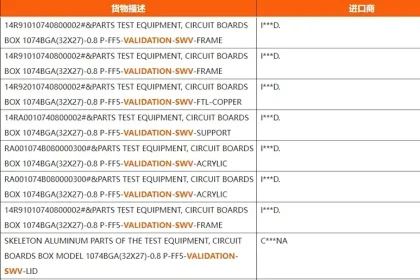As VMware pushes its vision for private clouds built around its core virtualization technology, rival vendors are ramping their efforts to create an alternative stack.
OpenNebula, the open source virtualization stack based on the Kernel-based Virtual Machine (KVM), last week released version 7.0 of its suite and billed it as “a major architectural leap” thanks to “a redefined cloud-edge orchestration engine … designed to support distributed, sovereign, and intelligent infrastructure across hybrid and multi-provider environments.”
The new version also added support for Arm processors, plus enhanced PCI passthrough that allows full compatibility with NVIDIA-mediated virtual GPUs and means users can deploy OpenNebula in “AI factories” – Nvidia-speak for datacenters or infrastructure pods dedicated to AI workloads.
The company has also improved its migration capabilities by adding more automation, and refined its cloud provisioning engine including by simplifying cluster setups. OpenNebula is already working on a maintenance release that include a full redesign of the engine and has started work on version 7.2.
Red Hat’s OpenShift Virtualization is also a work in progress, and last week reached version 4.19.
The big addition is technology previews of the platform running on Azure, Oracle Cloud Infrastructure, and Google Cloud. Once Red Hat nails those previews, it will be close to parity with VMware in terms of partners that can contribute to a hybrid cloud.
Another notable preview is smart resource allocation, which monitors virtual machines’ resource utilization in real-time and automatically distributes workloads to nodes that have capacity to run them well. Doing so should improve hardware utilization rates, a metric VMware is pushing hard as a reason to adopt its wares.
Red Hat has also improved its VM migration tools so storage arrays do the job of moving data, which reduces the time, and downtime, needed to complete a move. Hitachi Vantara has developed a preview of the tech and is driving its development.
Another new feature enables live migration of a virtual machine’s storage, either to a different tier of storage or to a different array. Again, this one is a preview that Red Hat expects will emerge in a future update.
Nutanix has been busy, too, with a late June release of an update to its Cloud Infrastructure stack.
Version 7.3 added a multicluster virtual switch that connects clusters and improves workload migrations across infrastructure pods. Nutanix also improved provisioning automation, enhanced virtual routing with border gateway protocol tweaks, and stepped up its resilience efforts by allowing users to store snapshots in Azure Blob Storage – enabling restoration without having to maintain Azure compute resources.
HPE’s virtualization update came in the form of a tie-up with backup vendor Veeam that sees the latter support the former’s Morpheus VM Essentials platform. HPE designed this product as an alternative to VMware’s lower-end vSphere server virtualization bundles, which are somewhat unloved at Virtzilla amid its private cloud push.
A few weeks back, Veeam also quietly revealed that it plans to deliver a beta of its wares for the XCP-NG virtualization stack during this northern summer.
VMware must support crucial Dutch govt agency as it migrates off the platform, judge rules
Broadcom delivers VMware Cloud Foundation 9 – the release that realizes its private cloud vision
Microsoft blows deadline for special Azure for EU hosters
Citrix finds new use for virtualization: Avoiding PC price hikes caused by tariffs
No platform succeeds without support from vendors of vital ancillary services like backup, so HPE and Vates – the company behind XCP-NG – have some nice validation in the form of Veeam’s belief their products represent an opportunity.
This collective burst of activity from virtualization vendors is attributable to the changes Broadcom brought to VMware, which is now all-in on its Cloud Foundation bundle that oversees private clouds – but comes with a hefty price tag. Broadcom insists that Cloud Foundation quickly pays for itself by providing a cheaper alternative to public clouds, lifting utilization rates of on-prem infrastructure, and in its latest version 9 allowing simplified cloud-like operations that make IT departments more productive.
Rival vendors point to considerable VMware price increases and the potential for lock-in as reasons to consider their wares. ®










